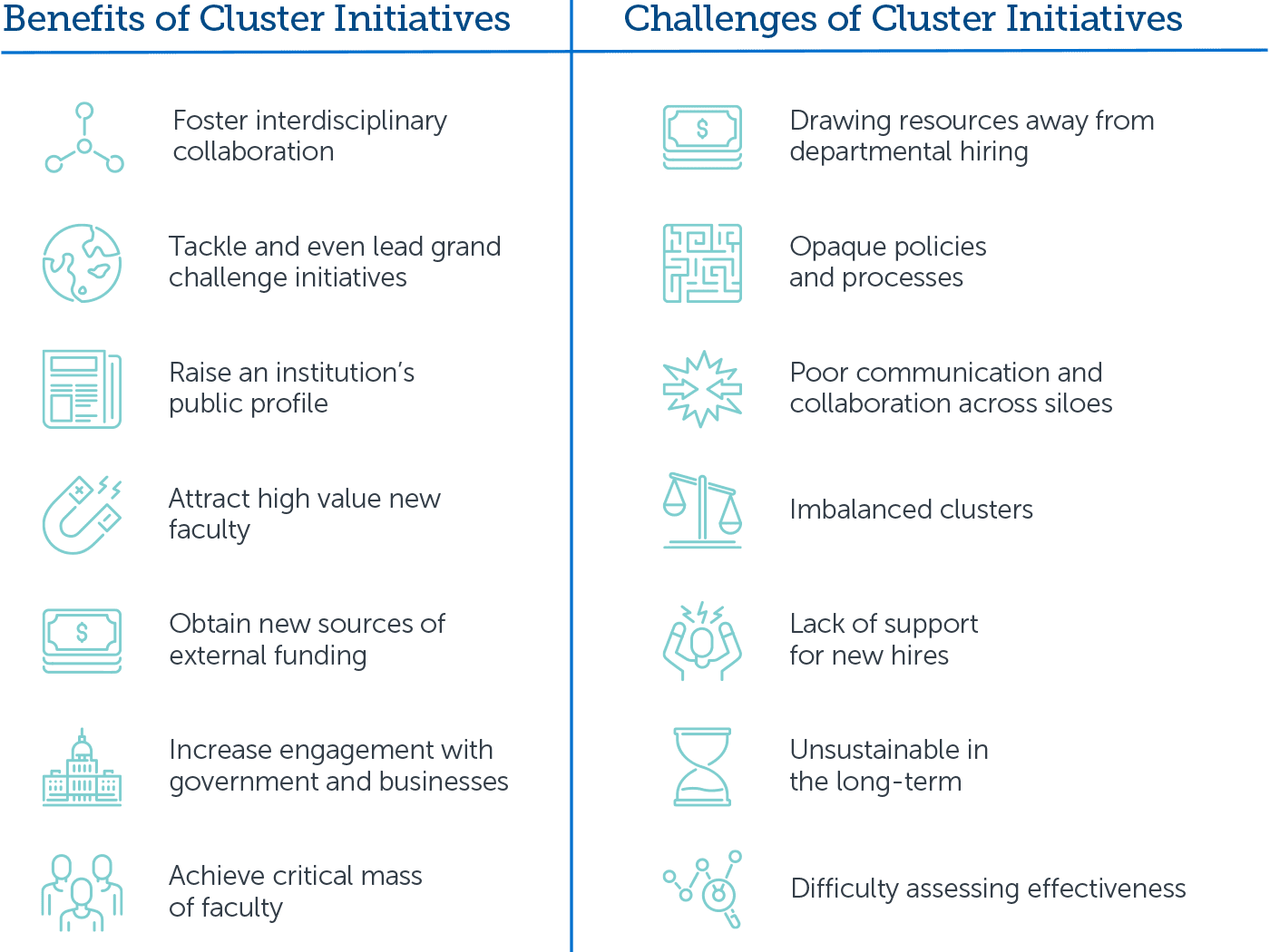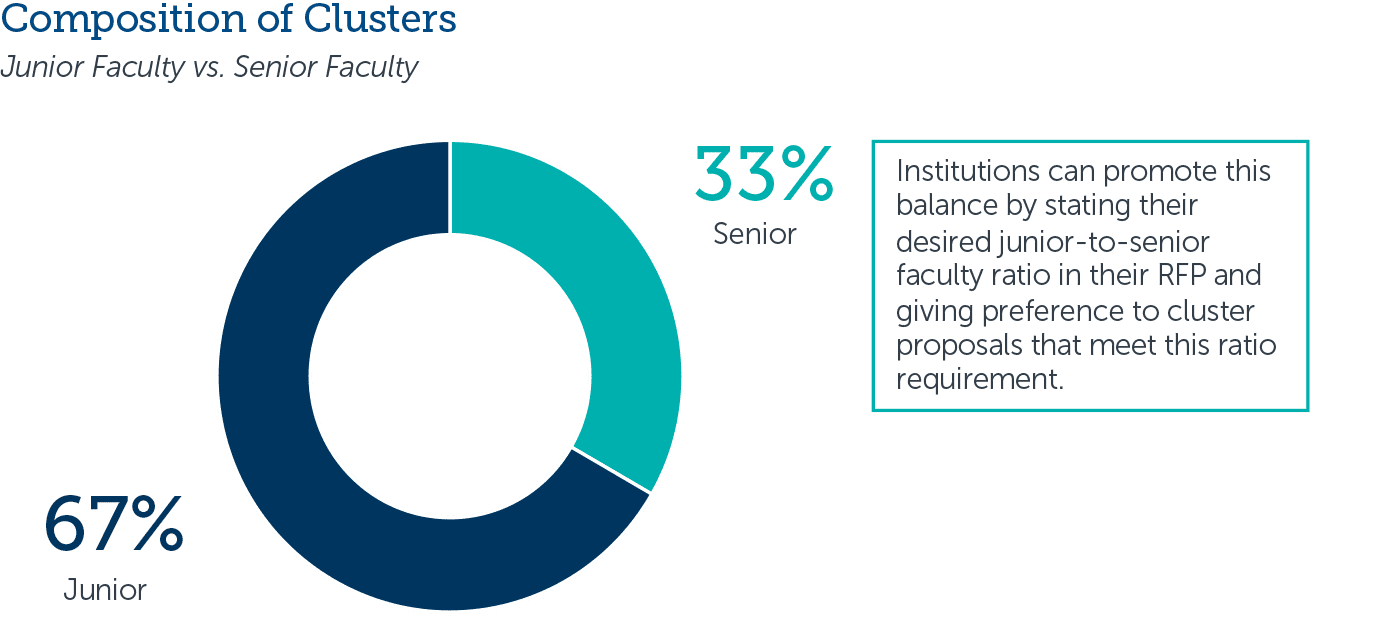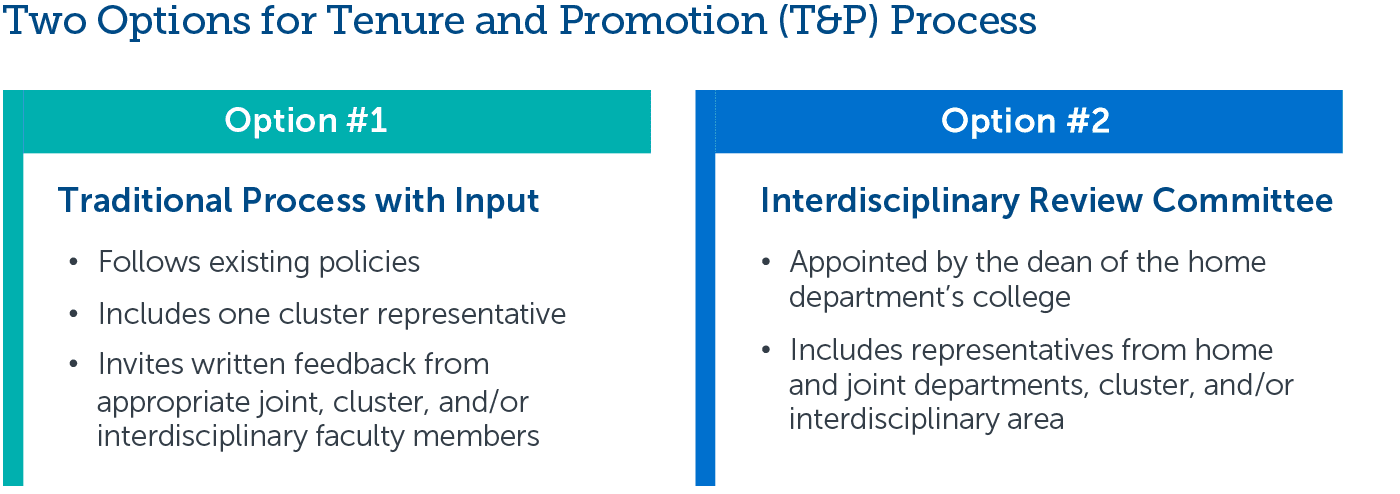Hire Faculty in Clusters to Cultivate Interdisciplinary Research
Cluster hiring is an effective strategy for institutions to enhance research competitiveness, increase research funding, and obtain high-quality faculty members. When done correctly, cluster hiring can balance departmental hiring needs with larger institutional research strategy. However, successful cluster hiring can often be resource-intensive, involve multiple stakeholders, and require ongoing support. To increase the effectiveness of cluster hiring, senior university leaders must conduct thorough planning and clearly communicate across seven stages of the cluster hiring process.

Evaluate if cluster hiring is right for you
Senior leaders should determine if their institution has the right resources and stakeholder support for cluster hiring initiatives. Hiring multiple faculty members at once requires greater financial and staffing resources. Senior leaders need to gain support for cluster hires since these require involvement from multiple departments.
Additionally, an institution needs to clearly define topics of multidisciplinary research in order to prioritize them for cluster hiring. We recommend pursuing cluster hiring only after assessing whether it aligns with your institution’s goals.


Set a strong financial foundation
Colleges and universities need to ensure proper funding for the upfront and ongoing costs of cluster hiring initiatives. You may link these initiatives to an institutional strategic plan, embed them in a fundraising campaign, or build a central fund for strategic investment.

Develop transparent processes for selecting clusters
Communicate the cluster selection criteria and benefits of cluster hiring to prevent skepticism and opposition from stakeholders.
In particular, there are five key points that administrators should repeatedly emphasize in order to minimize faculty concerns:
- Disciplinary hires will continue
- Departments are still involved
- Selection process utilizes peer review
- Initiatives are fundamentally faculty-driven
- Participation is not detrimental to junior faculty

To optimize cluster selection, check out these resources

Execute efficient searches for cluster hires
Leaders often struggle with time-consuming cluster searches that require inter-departmental coordination. To execute effective searches for new hires, include cluster representatives on the hiring committee and create a search strategy that considers cluster size, composition, and leadership to maintain cluster balance.


Support new cluster faculty
It is critical to provide ongoing support to new cluster hires to ensure faculty productivity and retention. Develop a cross-disciplinary tenure and promotion (T&P) process, and provide a statement of expectations, mentorship, and networking opportunities that will help new faculty settle in.


Plan and fund sustainable cluster growth
Cluster hiring initiatives may fail to achieve their goals due to a lack of ongoing financial support, leadership changes, cluster composition, or faculty drifting back to their own interests.
To achieve long-term financial support, consider adopting a cost-sharing model to recover initial investments in clusters, specifying the percentage and timeframe for central cost recovery. Additionally, invest in necessary facilities, equipment, and staff proactively to support all aspects of cluster initiatives in the long-term.

Assess cluster performance
Many benefits of cluster hiring are difficult to quantify so most institutions do not monitor cluster outcomes. We recommend establishing a range of cluster performance metrics and institutionalizing a review process to target improvement efforts and identify potential areas for investment.

This resource requires EAB partnership access to view.
Access the roadmap
Learn how you can get access to this resource as well as hands-on support from our experts through Strategic Advisory Services.
Learn More